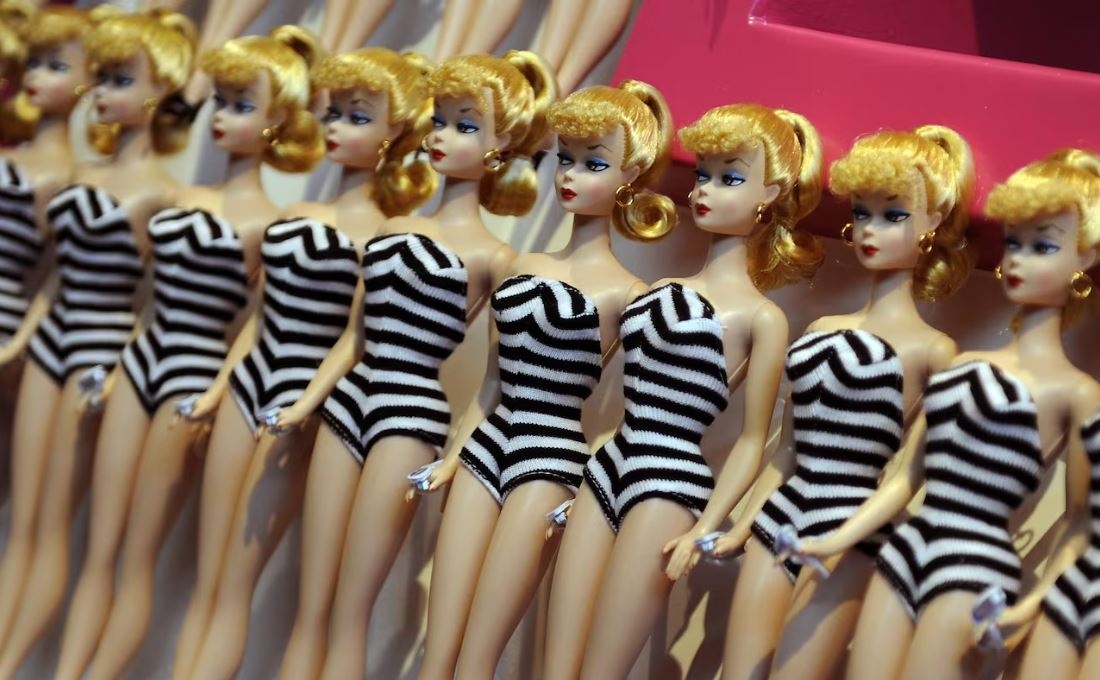Barbie’s 1959 Debut at the North American International Toy Fair
Dec 20, 2023

In honor of this year’s holiday toy season and the recent box office hit Barbie, we’re looking back to the 1959 debut of the iconic doll at the North American International Toy Fair at 200 Fifth Avenue in Flatiron.
Toy manufacturer Mattel “was already an industry heavyweight with a booming portfolio” at the North American International Toy Fair on March 9, 1959, according to businessinsider.com. “But there wasn’t much interest” in the company’s new Barbie doll creation at the fair that year. “Half of our buyers really didn’t like it,” recalled Ruth Handler, Barbie’s inventor and a Mattel co-founder, in a 1997 bbc.com interview. “The men felt that women would not buy a doll with a woman’s body—with breasts and narrow waistlines and narrow ankles, this adult sexy-looking doll. Men felt that their wives would not want it and that it wouldn’t be right for a child to have.”
“At the time, baby dolls were the popular toy,” notes usatoday.com. “There were not many dolls on the market that allowed girls to role-play and envision their future beyond motherhood.” Handler, however, was motivated to develop Barbie after “observing her daughter, Barbara, play with paper dolls for hours,” according to mattel.com, and recognizing “the opportunity to champion and inspire girls by introducing a three-dimensional doll that shows them that they can be anything.” In her 1994 memoir Dream Doll, Handler wrote that “my whole philosophy of Barbie was that through the doll the little girl could be anything she wanted to be.”
The concept of Barbie was conceived in 1956 when Handler and daughter Barbara, who was also the doll’s namesake, were on a family trip in Switzerland and spotted a novelty doll named Bild Lilli in a toy shop. Handler reportedly took about two dozen of the dolls back home. “Barbara kept one Lilli in her room,” according to biography.com, “while her mother took the rest to Mattel for a makeover.”
While the company’s top team “pointed to prohibitive production costs, Handler felt they were reacting instead to Barbie’s very feminine shape,” writes people.com. In her memoir, Handler wrote “the squeamishness of those designers—every last one of them male—stemmed mostly from the fact that the doll would have breasts.” According to history.com, “Handler always saw Barbie as a reflection of the times with the first doll mimicking the glamour of 1950s stars such as Elizabeth Taylor and Marilyn Monroe.” And in a 1967 Good Housekeeping interview, Handler stated “a doll with a teenage figure and lots of glorious, imaginative high fashion clothes would be radically different, and would appeal to today’s girls who grew up faster than they used to.”
When Handler introduced Barbie at the North American International Toy Fair on March 9, 1959, the 11.5-inch doll, whose full name was Barbara Millicent Roberts and a native from the fictional town of Willows, Wisconsin, wore a black and white zebra-striped bathing suit, blue-tinted sunglasses with a white frame, gold-tone hoop earrings, open-toe black high heels, and also had the option to come with either a blonde or brunette topknot ponytail. Barbie’s retail price was $3 and Mattel reportedly sold 300,000 dolls within the first year. “We tried not to make her too beautiful,” Handler explained in her 1997 bbc.com interview. “We were not anxious to have a beautiful doll, because we felt if little girls were going to project themselves through this doll, we didn’t want the little girl to be threatened by the beauty of Barbie.”
Header & Thumbnail Photo Credit: CBC







